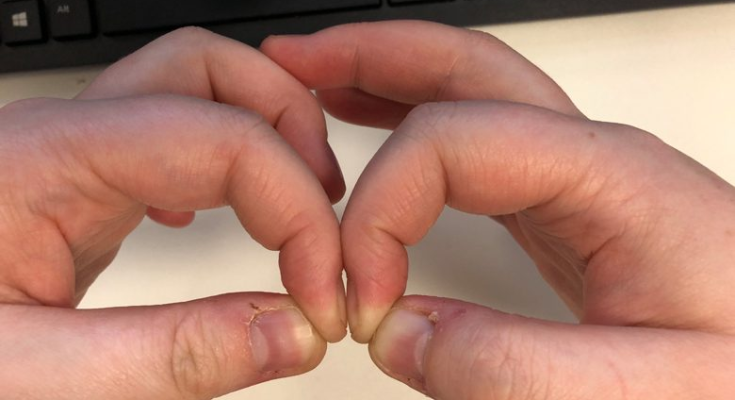How to Conduct the Finger Clubbing Test at Home
Are you ready to give the test a try? Here are the easy steps to follow:
- Keep Your Hands Steady: Extend your index fingers and bring their tips together with the nails facing each other.
- Check for the Diamond-Shaped Gap: Examine closely the area where your nails meet. If a small, diamond-shaped gap forms between the nail beds, it’s considered normal.
- Observe for Any Changes: If you notice that the gap is absent and the nails appear rounded or curved, this could be an indication of finger clubbing.
- Take Note of Other Symptoms: If you spot potential signs of finger clubbing, consider whether you’ve experienced other symptoms like a persistent cough, unexplained weight loss, or shortness of breath.
Common Errors When Performing the Test
While the finger clubbing test is simple, there are several common mistakes that you should avoid as they can lead to inaccurate results or unnecessary worry.
One frequent error is not positioning your fingers close enough together. If your nails don’t make proper contact, you might wrongly assume that the gap is missing. Make sure to align your nails carefully to obtain accurate results.
Another mistake is over-interpreting the results without taking other factors into account. Just because you notice a slight curvature in your nails doesn’t necessarily mean you have lung cancer. Certain harmless conditions, such as genetic factors or minor nail deformities, can also cause similar changes.
Finally, some people might skip consulting a doctor entirely, thinking that finger clubbing alone is sufficient to diagnose or rule out serious conditions. It’s crucial to remember that this test is only a screening method and not a substitute for professional medical advice.

